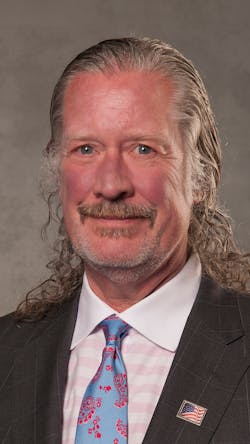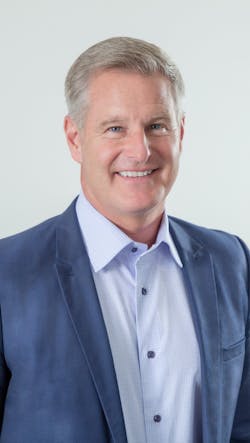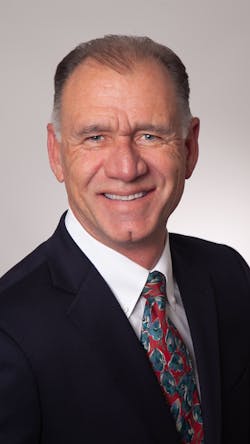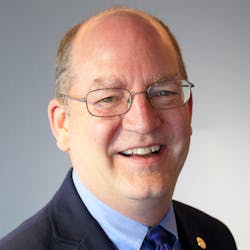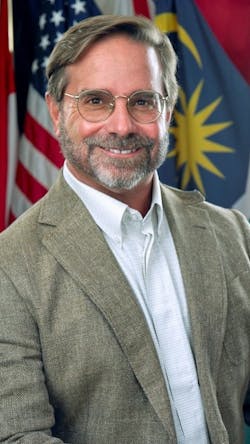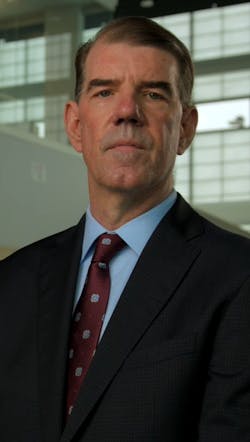What's New? What's Next? Industry Leaders Look at the Year Ahead
Two years ago, our annual "What's New? What's Next?" prognostications were blown up by the Coronavirus pandemic, which arrived in the U.S. just weeks later, on the heels of AHR Expo 2020 in Orlando.
A year ago, this forward-looking feature was similarly undercut by the massive uncertainties stemming from political upheaval in Washington and a still-raging pandemic that had forced the cancellation of AHR Expo 2021.
This year, of course, we make no guarantees, but just hope the third time is a charm as we spotlight nine opinions about the year to come.
Of note, as you read through these comments, you'll see several common threads that reflect proactive crisis management, from COVID-19 to supply chain snafus, and continuing commitment to growing priorities like enhanced indoor air quality, next-generation recruitment, energy efficiency, changing codes and regulations, remote technologies and decarbonization. And of course, all of these concerns, in one form or another, are also helping to drive innovation in ways we might not have even imagined just 20-plus months ago. (As an example, just ask yourselves how many Zoom calls you had ever participated in before March 2020!)
What does your organization expect to see in 2022?
John Hazen White, Jr., Owner and Executive Chairman, Taco Comfort Solutions, Cranston RI:
“My takeaway from 2021 is that most companies learned to adapt to unfolding crises. Healthy manufacturers paced themselves through a devastating, long-term pandemic, coupled with a supply chain crush. Some, however, have struggled irreparably through these challenges. As we head into 2022, knowing that there will be many influences on our business and the markets we serve – some routine, and likely some new and unforeseen – we must adapt to shifting influences, again. A key driver now is the need to manage through transitions in the workforce.
A few years ago, we saw the beginning of what’s since grown into a very large, very substantial exodus from the workforce, many of them skilled and loyal Baby Boomers, now moving quickly into retirement. In many instances, this has been fueled by the pandemic.
Here at Taco Comfort Solutions, we’ve enjoyed a stable workforce for many years. Now, we need to transition toward new employees. This requires the need to earn and win their interest, trust and confidence. It can and should be a healthy transition – one in which we as an employer must stay attuned to new people, new needs and interests. At the same time, we must maintain and properly communicate our own, long-standing cultural values and good ethics.”
########
Jeff Drees, Executive Vice President, Daikin Applied, Minneapolis MN:
The "Great Resignation" isn’t just a clever catchphrase. Talent is definitely scarce, and we’ll see a renewed emphasis on education and training, for engineers and other professionals, in 2022 and beyond, as a result. This is especially critical as more building owners and operators look to solve problems in their facilities with software and systems.
The push to digitize building technologies has immense value. However, it’s not the be all to end all. Having people with the skill set to interpret information and solve problems in real-time is critical. The two halves make a whole. It’s the combination that will allow the industry to address pressing issues like IAQ and decarbonization.
Product design training is the foundation for success. But it needs to be supplemented with systems and application training — particularly true as governing bodies such as ASHRAE introduce new standards to advance occupant health and sustainability. Educating engineers on the means to apply those standards is essential.
How that instruction is delivered will continue to evolve as well. It’s important to meet people where they are. So online training will grow and become more sophisticated, which we’re already witnessing with the introduction and expansion of virtual reality-based (VR) education.
##########
John Galyen, President, Danfoss North America, Baltimore MD, former chairman of the Air-Conditioning, Heating, and Refrigeration Institute (AHRI):
Technologies alone won’t get us there. We also need the right incentives, policies and regulations.
Last summer’s report from the Intergovernmental Panel on Climate Change and the recent news that U.S. greenhouse gas emissions increased over 6% in 2021 have amplified the sense of urgency on climate change. Together, we need to actively work to reduce our carbon emissions. To achieve our decarbonization targets, we will need to increase our use of electricity and other clean power sources, particularly in buildings and transportation. This is where we can have the largest impact.
But we can’t get there without energy efficiency. Energy efficiency should be our first fuel. There are proven – yet under-deployed – technologies that can help us reach our carbon reduction targets. Variable-speed technology, which allows HVACR systems to adjust to building demands and ensure efficient and reliable operation, can be applied to residential and commercial heating and cooling systems and yield up to 30% efficiency.
Lowering greenhouse gases and achieving net-zero carbon emissions will also require us to deploy new heating and cooling technologies to support the growth in heat pumps and heat recovery and reuse. The next generation of heat exchangers, including micro plate and micro channel, enable HVACR systems to operate more efficiently, reduce the size and refrigerant charge of the equipment and save energy.
Indoor air quality is the top concern for building owners post-COVID. Dedicated Outdoor Air Systems (DOAS) use outdoor air and variable-speed technologies to introduce fresh air and reduce particles in indoor air to keep occupants healthy. Variable-speed technology allows them to adjust their capacity to match the demands of the building, under a wide spectrum of outdoor air temperature and humidity, improving IAQ and efficiency, while maintaining comfort.
##########
Jeff Williams, president of Global Products, Johnson Controls, Milwaukee WI:
As we face the twin crises of the pandemic and climate change, technology is more critical than ever. We must rethink how buildings operate, and Johnson Controls has the technology today to help its customers navigate this global effort. The 2022 AHR Expo will bring together a collection of our latest and most advanced products that help create smarter, healthier and more sustainable spaces around the world.
Buildings account for an estimated 40% of U.S. emissions. To achieve global decarbonization, it’s critical to improve building energy efficiency, deploy more environmentally sustainable products and electrify building end uses like heating. Johnson Controls is committed to driving continual advancements in HVAC technology that enable a more sustainable future while ensuring compliance with government regulations, including the U.S. Dept. of Energy (DOE) 2023 energy efficiency standards and the industry’s low-GWP refrigerant transition. (For product details, click here.)
##########
Mick Schwedler, P.E., President, ASHRAE, 2021-2022:
Our technical focus is on IEQ, resilience, and decarbonization – which is a newer direction for us, but of great importance. We have a new ASHRAE Task Force on Building Decarbonization now that was really patterned after our (ongoing) ASHRAE Epidemic Task Force that was formed for the pandemic.
We now have over 100 global experts available today on decarbonization and our goal is not just to put the technical information out there, but to make it usable. We have signed on to the new COP26 commitments, but the real measure of success will not be on paper. It will be in actually reducing emissions.
So, the Task Force on Building Decarbonization is working on providing that practical, day-to-day guidance that allows the building owners, working with their designers and construction and operations teams, to reduce the emissions. And one thing that's easy to forget is that if you reduce energy use, you will automatically reduce carbon emissions, too. So that will be a big part of the work that the new task force does. (To listen to our recent podcast with Mr. Schwedler, click here.)
##########
Michael Ivanovich, Senior Director, Global Affairs, Air Movement and Control Association (AMCA) International:
Following the recent completion of our 2021-2024 strategic plan, AMCA is preparing to engage in ventilation and indoor-air-quality standards and guidelines expected to stem from COVID-19-related design and operational challenges. This is new territory for AMCA, as its advocacy historically has been focused on the specification of AMCA-certified products, as well as on severe-duty louvers, fire and smoke dampers, and fan efficiency.
AMCA additionally is preparing its members in North America for continuation of California and U.S. Department of Energy rulemakings for commercial and industrial fans and blowers, engaging in utility incentive programs, bolstering its Certified Ratings Program for stronger worldwide enforcement, building out its learning management system for professional-development-hour-eligible in-person and online education, and updating key testing and rating standards for fans.
Lastly, AMCA is also developing new standards for rooftop-equipment wind loading and for sound performance of large-diameter ceiling fans.
AMCA is optimistic that businesses generally will establish a new “normal” in 2022, given that people are learning to live with the virus and supply chains seem to be improving. A good sign of things to come is that, despite the Omicron flush of infections, the AHR Expo and ASHRAE Winter Conference are occurring in 2022, albeit with lower in-person attendance and hybrid meetings. In essence, 2022 may turn out to be what we were expecting from 2021.
##########
Carl A. Pinto, Jr., Senior Director, Marketing CommunicationsBradford WhiteCorp., Ambler PA:Despite myriad challenges we continue to face as a direct result of the pandemic, the onslaught of national, state and local regulations with regard to product efficiencies, building codes and requirements, and energy resources will present certain manufacturers with some their most significant challenges and opportunities in 2022.
For example, right now, several locations throughout the U.S. are enacting a variety of electrification-related regulations to reduce or eliminate the utilization of natural gas. On other fronts, we have states working to preserve fuel choice by enacting regulations to disallow local restrictions on gas utility services.
As manufacturers like Bradford White prepare to address these changes, we will be challenged on everything from product development and manufacturing to sales and distribution. And even the regulatory environment has not escaped the pandemic’s reach, with significant national, state and local regulations being shaped around vaccines and other measures to contain COVID-19.
##########
Frank Windsor, President, Rinnai America Corp., Peachtree City, GA:
We have seen tremendous growth in the gas water heating market over the last seven years, growing from about 8% to about 18% in market share. With this trajectory in mind, our corporate headquarters in Japan, together with our leadership group in Peachtree City have named North America as a major growth vehicle for the company.
The increasing demand for more energy-efficient appliances, as well as the current issues facing our economy, including supply chain backlogs and rising material prices, has created a scenario where our aggressive strategy will help to meet the increasing demand for both residential and commercial offerings in the current macro market climate. Prioritizing Rinnai’s commitment to creating a healthier way of living, the company will drive sustainable, profitable growth, by developing new product technology, supporting innovative leadership, and becoming a talent magnet for the industry.
We have also committed to continually improving operational excellence and are meeting rising demands by constructing a manufacturing facility right in our backyard in Griffin, GA, which opens in 2022. These approaches combined will provide our customers with the innovative, quality products they need, promptly.
##########
Doug Bougher, Director, Residential & Light Commercial Sales, LG Electronics USA Air Conditioning Technologies, Kansas City MO:
Overall, the HVACR market, especially residential, is strong as manufacturing and contracting organizations alike have adjusted to selling and training within a pandemic world. Considering that behaviors have shifted, market segments are now different, with hospitality and office segments within the commercial market stalling, while residential has grown tremendously.
Given that the pandemic has put a larger focus on indoor air quality (IAQ) via outside air requirements, filtration, and/or purification, LG is poised to continue pushing growth in IAQ. Additionally, with electrification and decarbonization becoming increasingly important as more states consider measures aimed at fossil fuel reducing guidelines, we foresee heat pump technology to continue growing as a preferred solution.
LG will continue making this a key focus, as well. Lastly, HVAC is a relationship-driven business, so the most important discussions continue to revolve around growing our relationships with customers. For LG, this looks like promoting customer and partner engagement and aligning product innovation with industry trends.
##########










